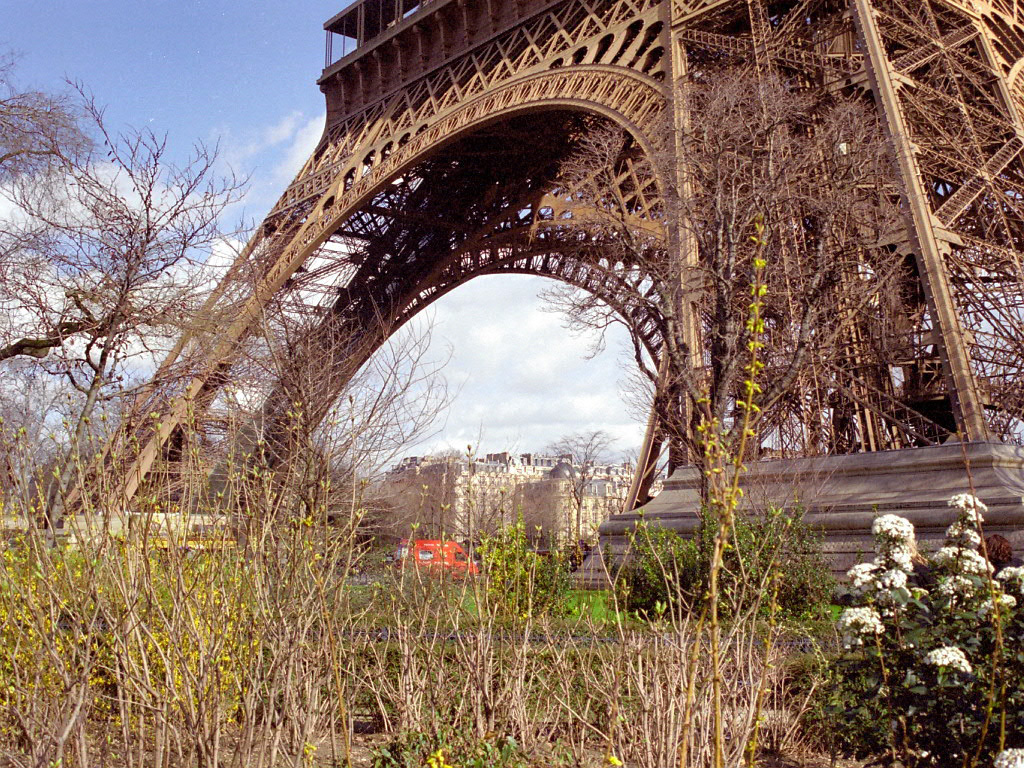
It is now over 60 years since I first got interested in photography and started taking pointers from my Uncle Howard.
I suppose for simplicity I can break up the time periods into ages of activity:
1960-1970 – The Paleolithic Age
- Equipment: Ansco Cadet pocket camera system.
- Media: Mostly slides – 127 paper backed film

Mercifully not much of this era has survived. Aside from bad quality, the subject matter is dismal. Most of what is left are a few digitized slides from my last year at Queen’s.
1970-1982 – The Stone Age
Shortly after I started my career with General Foods, I bought my first “serious” camera.
- Equipment: Yashica Electro M5 rangefinder.
- Media: 35mm Slide Film
This camera was in service during the time I met Maria, and documented our early life and times together. It was also used for the first pictures I took of Sarah. It went to Switzerland with me on my first overseas journey.

The Yashica was a Jeckyll-Hyde sort of device. With good light it was quite capable of decent imagery; in poor light or with flash it was a toss-up whether you’d get a decent picture or not. The above is from the fall of 1971 at Maria’s aunt’s home in Buffalo NY.

This one is of Capilano Canyon in Vancouver in 1973.
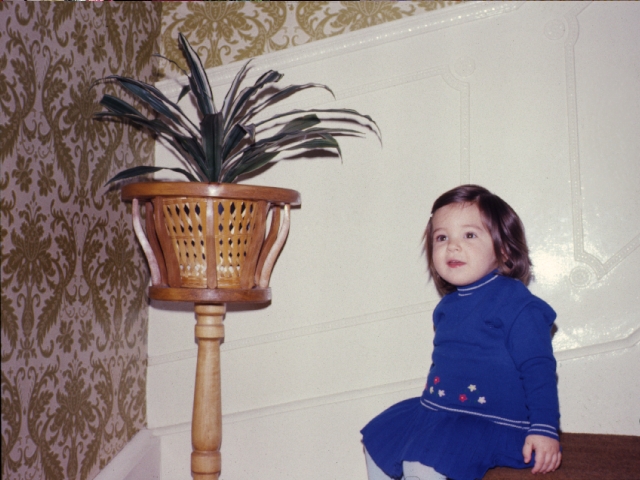
Sarah at our new home in Georgetown in 1979.
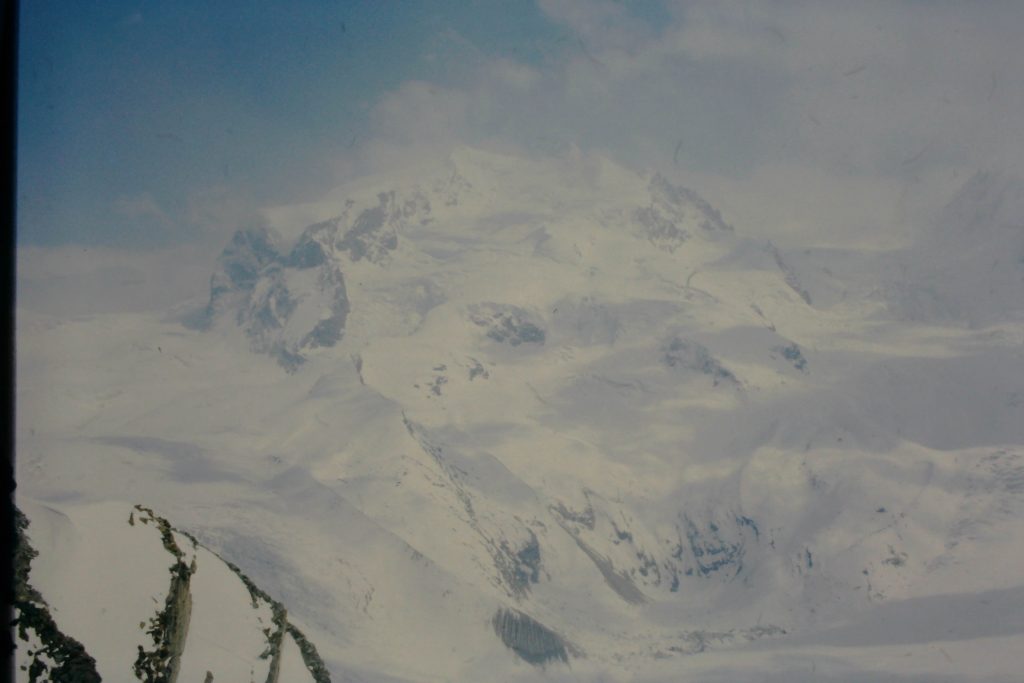
Monte Rosa Switzerland 1981.
1983-2001 The Bronze Age
In 1983 I had my chance to buy my first SLR camera. This has led to an over 40 year relationship with Nikon.
- Equipment : Nikon FE manual focus SLR. Various 3rd party lenses.
- Media: Until 1985, 35mm slide film. After 1985, 35mm print film.
At the time I got the Nikon FE (used) I was not able to afford a bunch of Nikon branded manual focus lenses. I did get some 3rd party zooms at reasonable prices. These tended to be slow and bad in low light, so I had problems even with faster film.
I did get some decent images though.

Sarah at the Toronto Zoo, 1984.

In Philadelphia, 1985.

Enjoying the swimming pool in Georgetown, 1985.
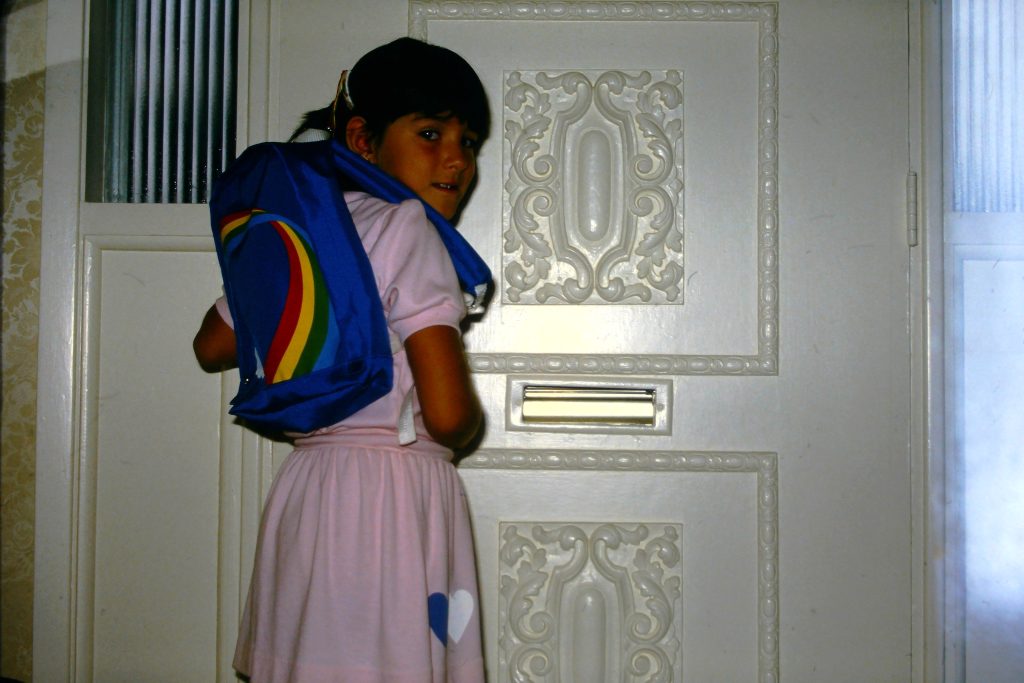
First day of school in I believe 1985.

At Gettysburg, 1985.
Starting in 1987, we took a March break holiday every year as well as some fly and drive summer holidays. Most of these holidays were documented in photo albums which we keep to this day. The pics have not been digitized and it would be a huge effort to do so. Nevertheless the FE and its lenses saw lots of use between 1987 and 2000.

As an example I scanned a few images from our trip to Texas at March Break 1989. Here is Sarah at Rosita’s bridge on the San Antonio Riverwalk.

A view of the Riverwalk itself.

And here is La Villita marketplace near the Riverwalk.
2002-2007 The Golden Age
- Equipment: Nikon F80 film camera.
- Film: Mostly Fuji 400 print film.
By 2001 I was growing increasingly frustrated with the Nikon FE. My eyesight was failing and I could no longer focus the camera correctly. Many of my images turned out blurry.
To correct matters I invested in a new Nikon F80 film camera and a couple of Nikon zooms. Later I added a few second hand Nikon primes and zooms to the mix.
The resulting kit was the last hurrah for 35mm film and in fact its golden age. The camera was a joy to use. It had automatic film loading and advance. The lenses were autofocus so I didn’t have to worry about blurry shots. There was even a corrective control on the viewfinder to account for my failing vision.
By now computer tech had advanced enough that I could scan and digitize and store photos. So I started to dip my toe into the digital pool.
The first time I actually used the new system was in 2002 when we took a March break trip to Belgium. Here are some of the scans from that holiday.

The Grand Place in the baroque heart of Brussels.

Leopold Park in the neoclassical European Quarter of Brussels.

The main square in Bruges.
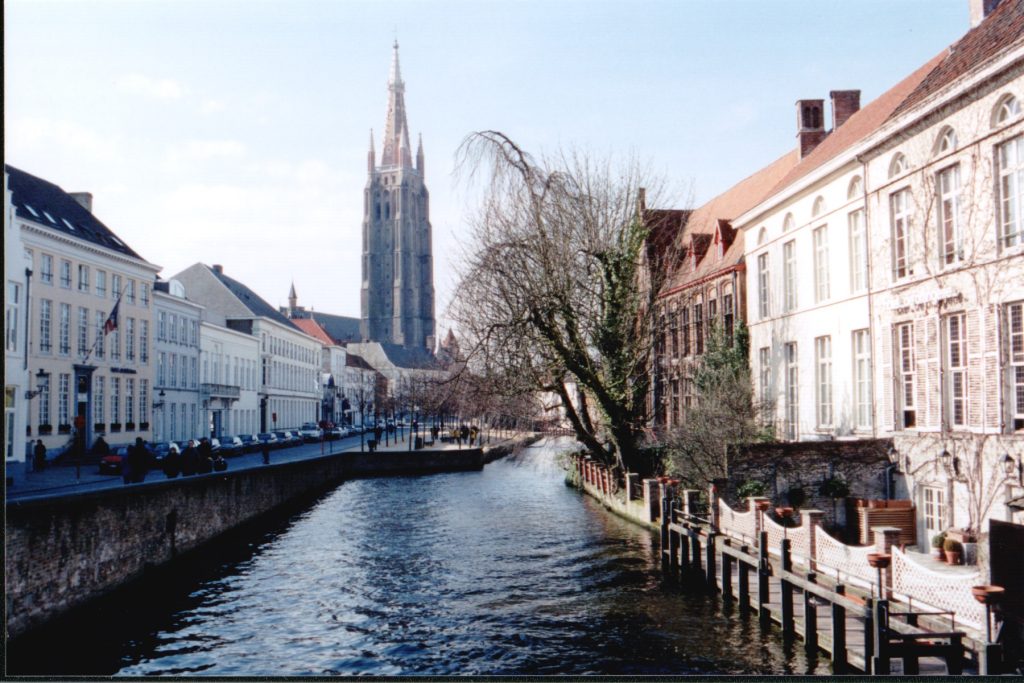
Beautiful Bruges canals.

The Cloth Hall in Ypres. Destroyed in World War I, it took 50 years to rebuild.
The last time I took a complete film kit with all the lenses was on our first cruise holiday in 2006.
Here are some of the scans from that trip.

Field of Mars, St. Petersburg.

Fortress of St Peter and Paul, St. Petersburg.

Peterhof palace, outside St. Petersburg.

Celebrity Constellation in Tallinn, Estonia.
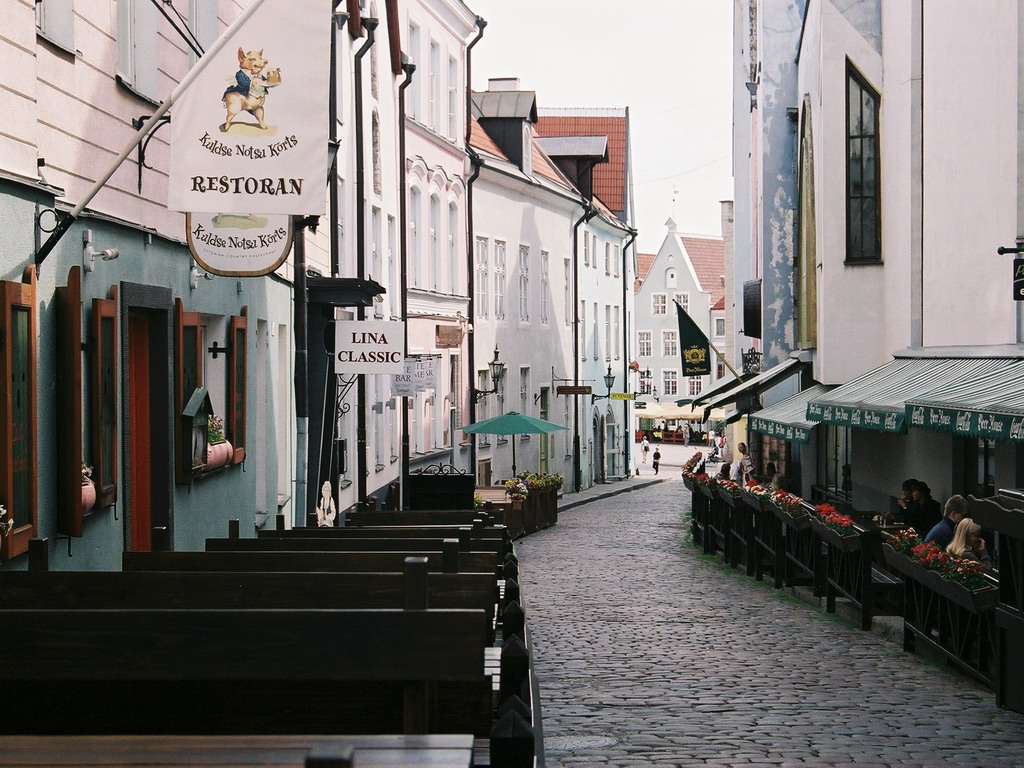
City street in old Tallinn.
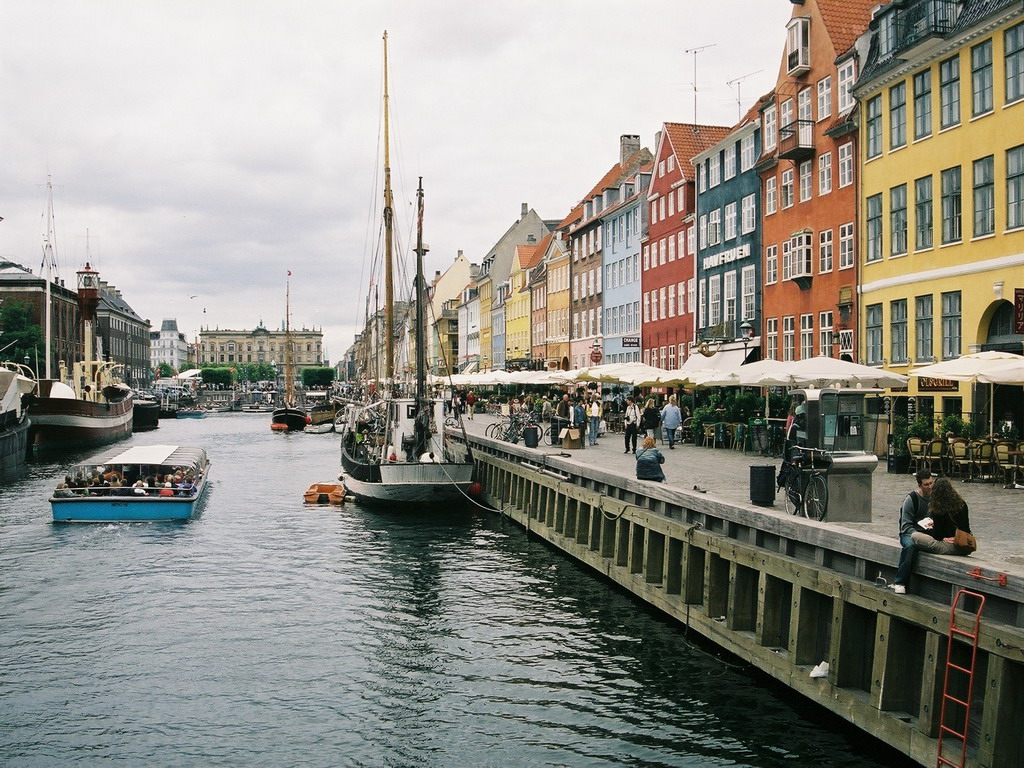
Nyhavn, Copenhagen Denmark.
After our retirement in 2005 we did a fair bit of travel – most of it involving flights and cruise ships. It became increasingly difficult to take a full-fledged film kit along.
Rasons for this were many:
- Changes to airline boarding security made it difficult to take a lot of additional baggage – such as a film camera and interchangeable lenses.
- Film was increasingly subject to X-ray scrutiny. Although I never had a problem there was always the possibility that your film would be fogged or destroyed.
- Longer holidays meant taking more film along, or trying to buy it in foreign countries.
- The whole kit was getting heavier and harder to take along – I wasn’t getting any younger either.
I was ready for a transition to digital – but not to a digital SLR.
2007-2015 The Transition Age
Travel photography after 2006 became almost exclusively a digital exercise. I owned a series of point and shoot (compact) digital cameras over the years. This was a time of rapid development in digital photography and the early DSLR cameras were a bit primitive. They had problems with dust getting on their sensors and I didn’t want to be cleaning a delicate sensor all the time. So I stuck to compacts by and large.
- Equipment: Some cameras I owned during this time were, with the number of Megapixels in each photo:
- Canon Powershot A60 (2MP)
- Nikon Coolpix E5000 (5MP)
- Fuji FinePix S6000fd long zoom bridge camera (6.1MP)
- Fuji FinePix F480 compact camera (8MP)
- Canon Powershot S90 compact camera (10MP)
- Media was of course whatever digital sensor came with them. They were all CCD sensors.
I’ll show a photo taken with each of these cameras.

Beaver Valley Ontario 2003 (Canon A60)

Old Montreal 2006 (Nikon E5000)
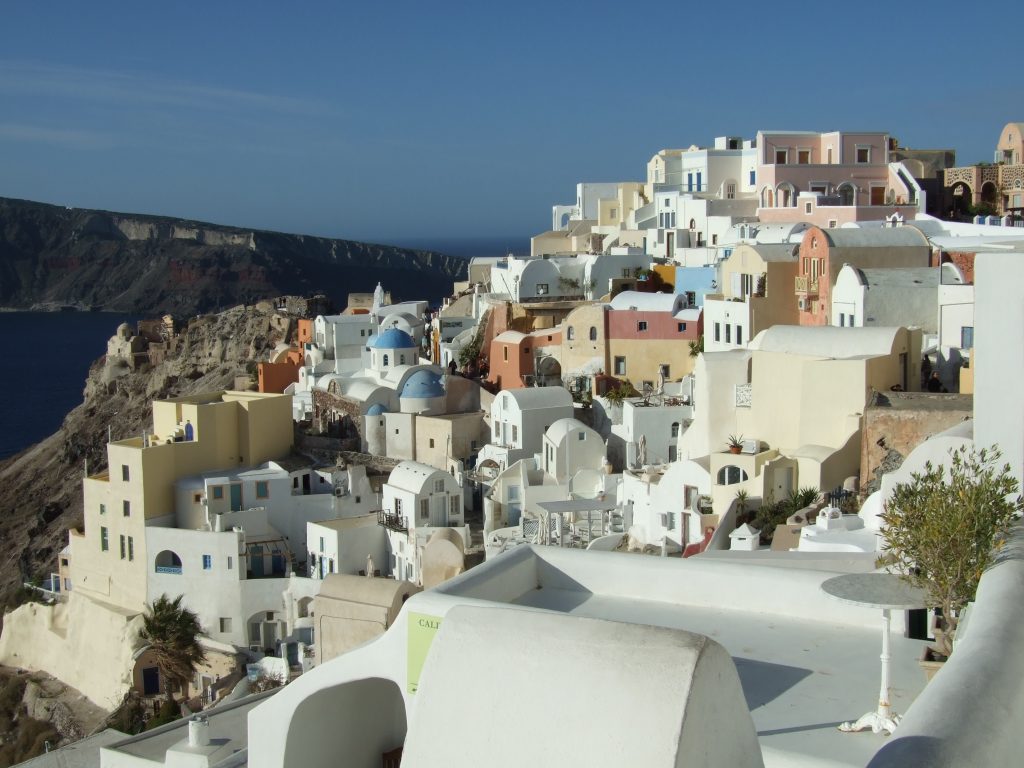
Oia, Santorini 2007 (Fuji S6000fd)
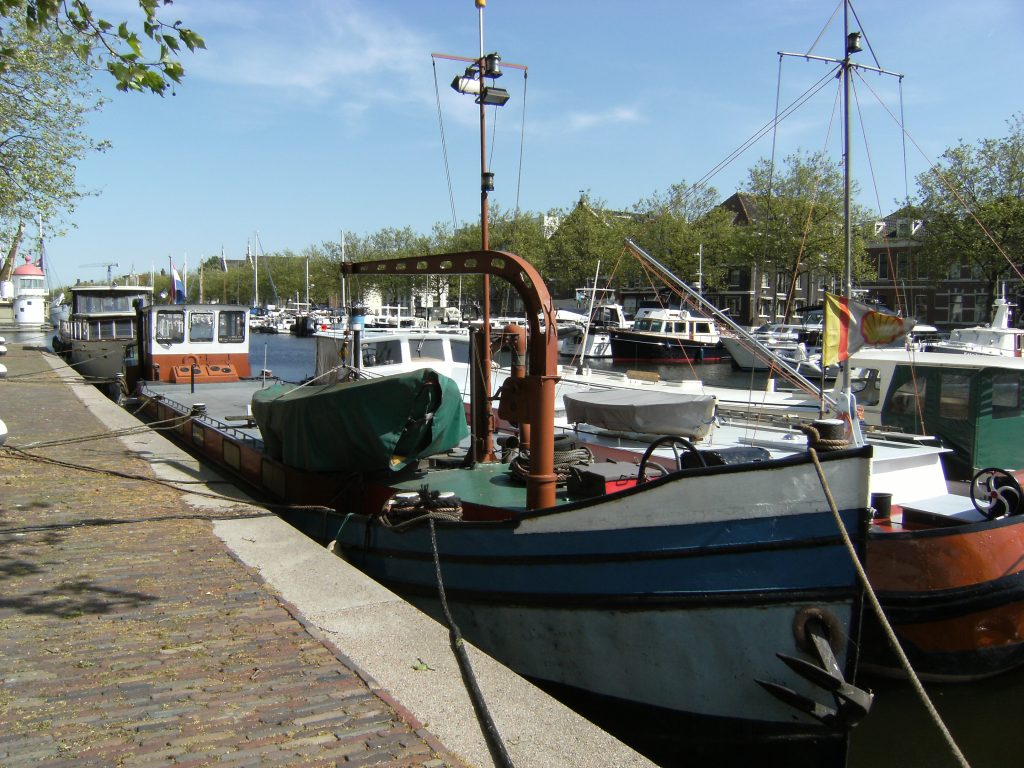
Vlaardingen NL 2009 (Fuji F480)

Bora Bora French Polynesia 2015 (Canon S90)
By 2015 my transition to digital was complete. I thought I might dabble in digital SLRs again at that point.
2015-2024 – The Large and Small Age
- Equipment: Nikon D5500DSLR and lenses
- Panasonic Lumix ZS50 Travel Zoom
- Media CMOS sensors.
In 2015 I once again purchased a digital SLR and some modern Nikon autofocus lenses. I didn’t intend to take this system on any of our travels though. For that I got my current travel superzoom pocket camera – a Panasonix Lumix ZS50.

Here is Almonte ON in 2019. Taken with a Nikon D5500 DSLR with a legacy Nikkor 35mm autofocus film lens from the 1990s.

And here is Rome 2019 taken with the Lumix ZS50 travel zoom.
That brings me up to date – almost. I’ll end with a pic taken from our latest Caribbean cruise.

Amber Cove, Puerto Plata DR – Feb 2024. Lumix ZS50.
So while there has been a sea change in my photographic equipment and media over the years, a few things have remained the same.
- I stick to static image photography. I have never been a fan of video and movie making.
- Photography for me has to tell some sort of story or document events or travels.
- I do my photography in color. I know black and white has its nostalgic appeal but I leave that to those before me who were taking pictures in the 1920s, not the 2020s.
As for the future – well as long as I am able, I’ll continue to use the camera tools I have. Most folks by now have put dedicated cameras away in favor of a smartphone. I doubt I’ll ever do that, although in very low light a smartphone camera may work wonders with its computational photography.

San Juan PR by night. Pixel 7 Smartphone image.
This has been an ambitious blog post – to cover a lifetime of photos – and I hope you stuck with me. Photojournalits used to end their stories with a -30- so I’ll do that now.
-30-